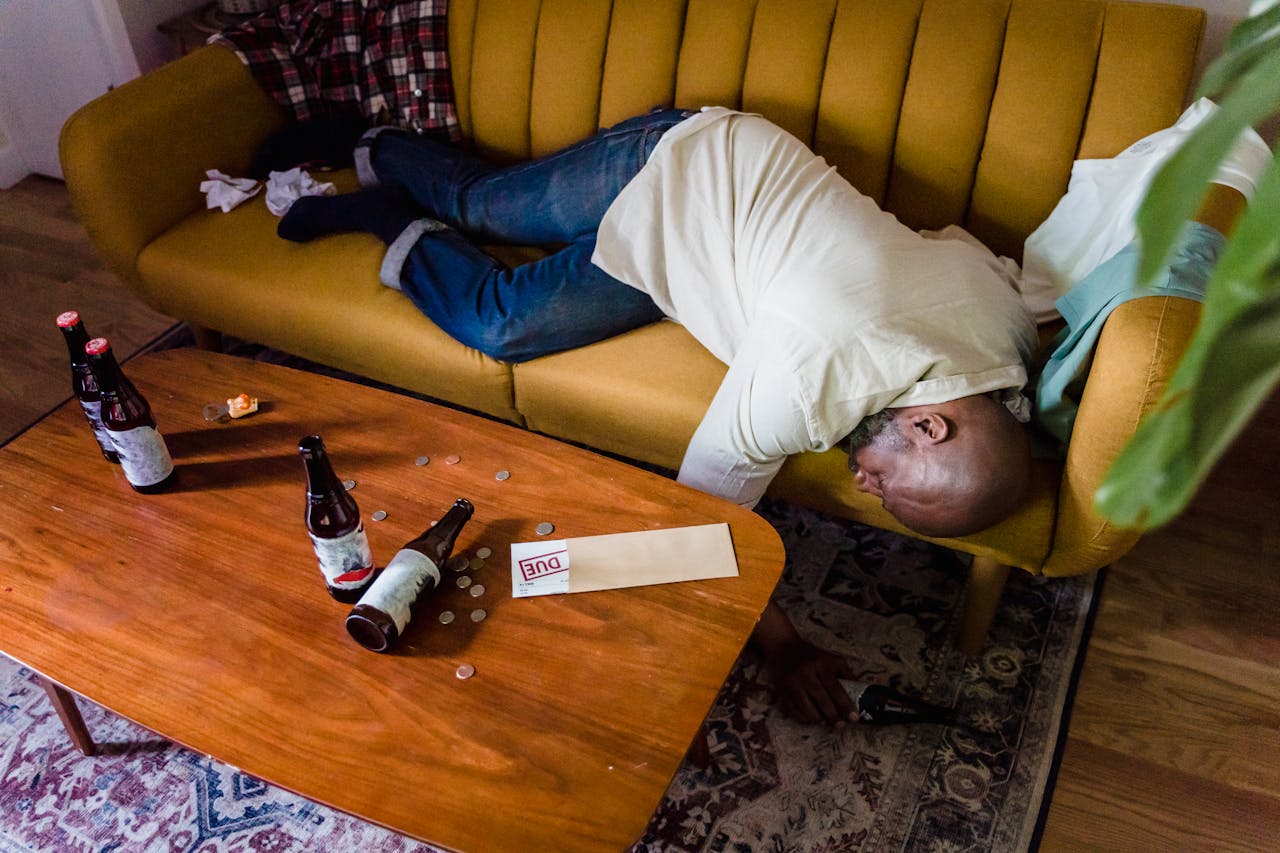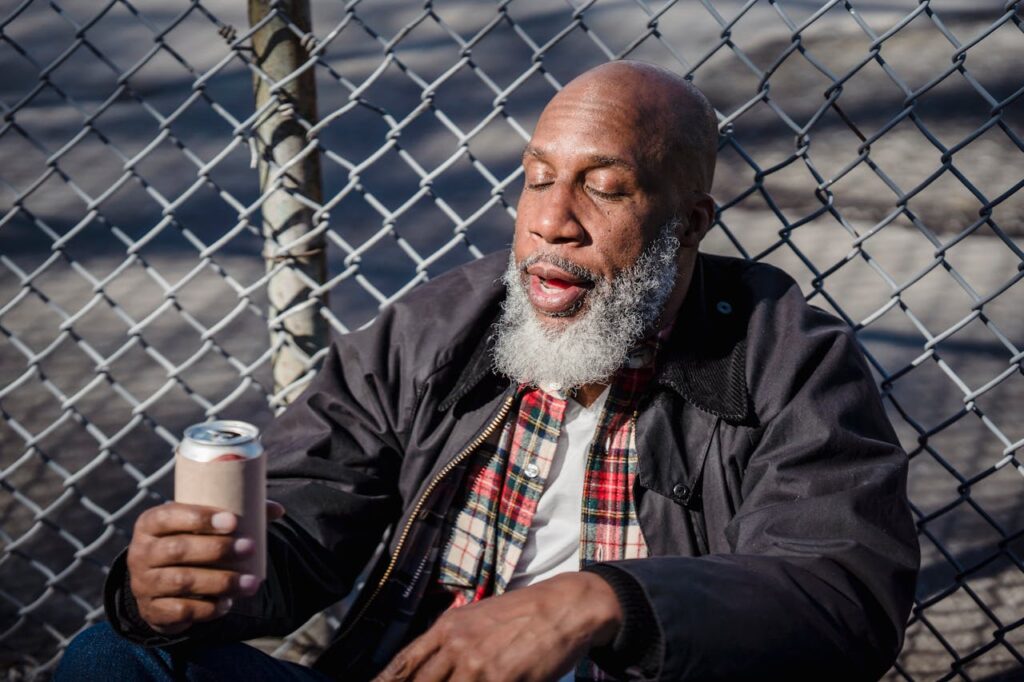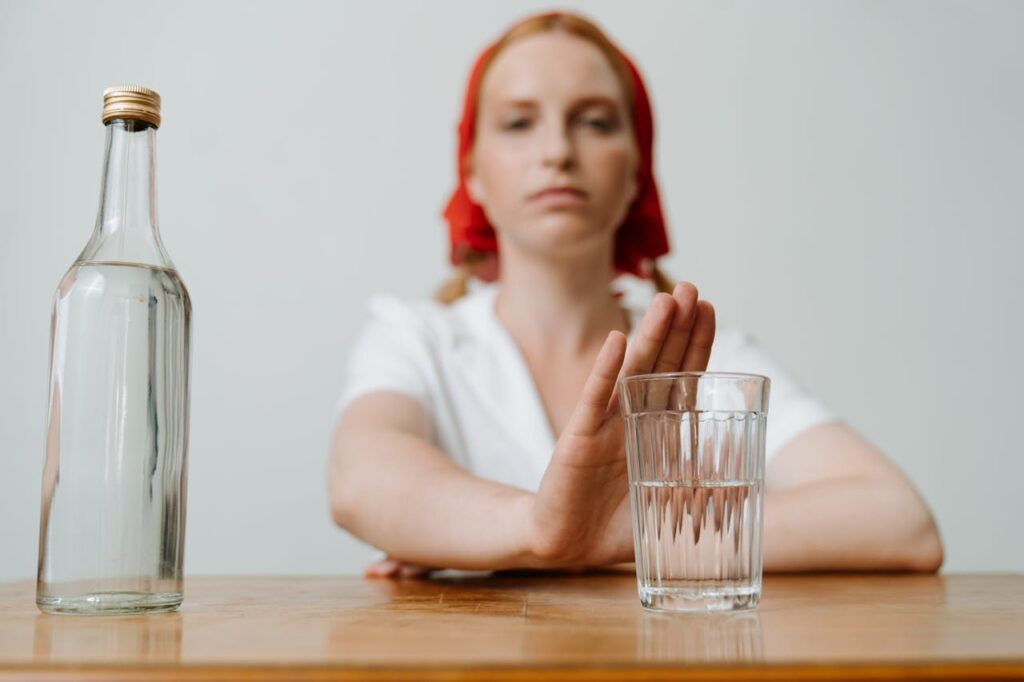Understanding BPD and Alcohol Abuse: What Dual Diagnosis Means

Getting support that works starts with knowing what you’re up against. At our addiction treatment center in San Fernando Valley, we see how emotional chaos and substance use feed into each other, especially in people living with BPD and Alcohol Abuse. These aren’t separate problems. They interact, intensify, and often block recovery when treated in isolation. That’s why this post focuses on what dual diagnosis really means. You’ll get the numbers, the warning signs, the treatments that actually help, and the strategies that hold up when things get hard. Whether you’re trying to understand what’s happening or looking for a path forward, this isn’t a lecture—it’s a guide built for real people navigating real chaos.

What Do the Numbers Say About BPD and Alcohol Abuse?
You might be surprised at how often Borderline Personality Disorder and Alcohol Use Disorder show up together. But the data is clear. Nearly 50% of people diagnosed with BPD will also meet criteria for Alcohol Use Disorder during their lifetime. Right now, about 45% of people with BPD are actively dealing with alcohol misuse. And it doesn’t stop there. When you include all substance use disorders, the overlap jumps to nearly 75%. That’s three out of four people. This isn’t rare. It’s standard in dual diagnosis care.
Many programs—especially those in California—are updating their intake process to reflect these realities. At our dual diagnosis treatment center in Los Angeles, for example, clinicians know to screen for borderline traits from day one. If you’re supporting a loved one or struggling yourself, these stats tell you you’re not alone—and that help is available when it addresses both problems at once.
Why Do BPD and Alcohol Abuse Often Go Together?
What connects these two struggles so closely? First, there’s the emotional pain. People with BPD often deal with deep feelings of rejection, fear, anger, and sadness—sometimes all within one day. Alcohol offers temporary relief. It dulls the chaos and slows things down. But that relief is short-lived. People find themselves drinking more often, then relying on alcohol to manage their emotional spikes. That’s when dependence forms.
The second piece is impulsivity. BPD increases impulsive actions. So when someone with BPD drinks, they’re more likely to binge, blackout, or hurt themselves. It’s a loop that feeds itself. Over time, the drinking makes BPD worse, and the worsening symptoms drive more drinking. These patterns are so common that many people entering inpatient detox San Fernando Valley centers report both emotional and alcohol-related symptoms, even if they came in thinking only one was the issue.

How Does Alcohol Affect the Symptoms of BPD?
Let’s talk specifics. Alcohol acts as a depressant. That means it affects brain chemicals linked to mood, impulse control, and decision-making. If you already struggle with emotional regulation—as people with BPD do—alcohol takes away even more control. Suicidal thoughts often increase after drinking. Impulsive behaviors, like self-harm or unsafe sex, become more likely. One study showed that alcohol misuse can double the likelihood of hospitalization for people with BPD.
And in outpatient settings, clinicians often report that episodes of rage, panic, and dissociation happen more frequently when drinking is involved. These are not small shifts—they’re dangerous ones. That’s why treatment facilities focusing on alcohol detox in Los Angeles now include mood stabilization protocols early in the process. They don’t wait for mental health to “get better later.” They treat both alcohol and BPD symptoms in real time because waiting leads to higher risk of overdose or psychiatric crisis.
Why Is Integrated Treatment So Important?
Imagine trying to fix a leaky pipe while the roof is still open and rain is pouring in. That’s what it’s like to treat BPD without addressing alcohol abuse—or vice versa. The best outcomes happen when treatment tackles both at once. This is called integrated dual diagnosis treatment. At a reputable residential treatment Los Angeles facility, you’ll see teams working across disciplines: addiction counselors, DBT-trained therapists, trauma specialists, and sometimes psychiatrists who specialize in co-occurring disorders.
Research shows that patients in integrated programs are 50% more likely to complete treatment and 35% less likely to relapse in the first year. Why? Because the approach makes sense. Clients aren’t expected to compartmentalize their issues. Instead, they’re treated as whole people, with symptoms that affect one another. The program teaches how emotional instability feeds addiction and how sobriety opens the door to emotional healing.
What Therapies Help People Recover from Both?
Some therapies work better than others. Dialectical Behavior Therapy, or DBT, was designed for BPD and is now widely used in addiction care. In one study, people who completed a DBT program reported 30% fewer relapses and significant improvements in mood regulation. DBT focuses on skills: emotion control, distress tolerance, mindfulness, and building healthier relationships. A second option is Dynamic Deconstructive Psychotherapy (DDP). DDP lasts a full year and is structured for people with BPD and substance issues.

In one long-term study, 90% of DDP participants showed major improvements in both emotional control and substance reduction. Programs combining DBT and DDP are rare, but they do exist—especially at advanced drug rehab centers in Los Angeles CA. Then there’s Schema Therapy, Mentalization-Based Treatment (MBT), and Cognitive Behavioral Therapy (CBT). These support emotional insight and long-term change. None of these options are quick fixes, but they work when done consistently with professional support.
What Does a Full Treatment Plan Look Like from Start to Finish?
Real recovery begins with a detailed assessment. Clinicians ask about mental health, substance use, trauma, and support systems. Then comes detox. A supervised detox is critical. Alcohol withdrawal can cause seizures or psychosis. That’s why many clients begin in settings like cocaine addiction treatment Los Angeles centers that offer full medical supervision. After detox, patients usually transition into residential care or Partial Hospitalization.
In these programs, clients attend therapy multiple times a week, including DBT groups and individual sessions. They also work on relapse prevention and family engagement. Over time, they may step down to outpatient or IOP (intensive outpatient) care. Follow-up continues for 6–12 months, depending on need. This full-spectrum care is proven to reduce relapse, increase emotional stability, and build long-term success.
How A Dual-Diagnosis Plan Typically Unfolds
Each phase of recovery builds on the next. Here’s what the full timeline usually looks like:
- Step 1: Comprehensive Assessment – Evaluate mental health history, substance use, trauma, and family dynamics.
- Step 2: Medically Supervised Detox – Stabilize safely, often with medication, to manage alcohol withdrawal.
- Step 3: Transition to Residential or PHP Care – Begin therapy-focused treatment in structured environments.
- Step 4: DBT and Addiction Therapy – Combine individual and group sessions to build coping tools.
- Step 5: Family Involvement – Bring in loved ones for education and relationship repair.
- Step 6: Step-Down Support – Shift to outpatient or IOP care while reintegrating into daily life.
- Step 7: Ongoing Follow-Up – Maintain progress through monthly check-ins, group meetings, or sober coaching.

What Tools Can Prevent Relapse After Treatment Ends?
The key is preparation. Clients need tools, not just good intentions. One of the most effective strategies is trigger mapping. Clients list out specific situations, people, or emotions that increase the urge to drink. Then they learn how to manage those moments using DBT tools. Mindfulness helps with emotional grounding. Distress tolerance gives them healthy distractions. Emotion regulation reduces the spikes that lead to drinking. But tools only work if they’re used.
That’s why many people benefit from joining sober communities or 12-step programs. These support systems give them accountability and connection. Every client also works on a crisis plan—what to do, who to call, and where to go if things spiral. This isn’t just a safety net. It’s a core part of long-term success. Clients who follow their relapse prevention program in California are statistically more likely to maintain sobriety and emotional balance over time.
Building a Personalized Relapse Prevention Plan
Avoiding relapse means having a concrete plan. These are the steps most clinicians recommend:
- Step 1: Identify Triggers – List people, places, or emotions that increase drinking urges.
- Step 2: Learn DBT Skills – Practice mindfulness, distress tolerance, and emotion regulation regularly.
- Step 3: Create a Crisis Plan – Decide who to contact, where to go, and what actions to take in emergencies.
- Step 4: Strengthen Support Networks – Join peer groups, attend 12-step meetings, and build sober friendships.
- Step 5: Monitor Progress – Use a diary card or journal to track urges, mood, and coping daily.
- Step 6: Stay Engaged – Keep seeing a therapist or counselor even after formal treatment ends.
What Does Recovery Look Like?
The environment matters. That’s why our Sun Valley facility stands out. You’re not just another file in a system—you’re a person receiving custom care. The setting is peaceful but structured. Clients participate in therapy, activities, meals, equine therapy for addiction treatment, and rest with rhythm and predictability. Our center offers private or semi-private rooms, holistic services like yoga and art, and certified clinicians with dual diagnosis expertise. The biggest advantage? Our facility in Sun Valley emphasizes trust.
You build relationships with your treatment team and peers. That emotional safety translates into deeper healing. And because we follow integrated models, you don’t bounce between services. Everything happens under one roof. Clients in dual-diagnosis programs here often report lower dropout rates and higher satisfaction scores than state averages.
How Do You Know If Treatment Is Working?
Tracking recovery helps clients stay motivated and helps providers make smarter decisions. One of the simplest tools is the DBT diary card. Clients use it daily to record emotional intensity, urges to drink, and use of coping skills. Over weeks, patterns appear. That allows therapists to adjust the plan. Monthly assessments—sometimes using standardized surveys—track alcohol consumption, emotional stability, and relapse risk.
Long-term goals include reducing hospital visits, increasing time between urges, and improving relationships. Research shows that 50–70% of people in integrated programs for BPD and alcohol issues reach remission in BPD symptoms within 5–10 years. That’s a massive shift. Clients who once felt hopeless now manage their emotions without substances. And families? They often say they finally feel like they’re getting their loved one back.

Measuring Recovery One Step at a Time
Progress looks different for everyone, but here’s how it’s usually tracked in real-world care:
- Step 1: Daily DBT Diary Cards – Record urges, moods, and coping skill use.
- Step 2: Monthly Clinical Reviews – Evaluate symptom severity and substance use patterns.
- Step 3: Therapist Feedback – Adjust treatment goals based on behavior and engagement.
- Step 4: Family Input – Consider how relationships are improving at home.
- Step 5: Long-Term Benchmarks – Aim for longer stretches of sobriety, emotional stability, and fewer crises.
- Step 6: Reassess Annually – Check for readiness to graduate from care or shift into lower levels of support.
What Long-Term Results Can You Expect?
Let’s end with some truth and some hope. Recovery from BPD and Alcohol Abuse isn’t quick. But it’s absolutely possible. In the most successful programs, 50–70% of clients reduce BPD symptoms long-term. That includes fewer mood swings, less impulsivity, and more emotional control. In programs using DDP, up to 90% of clients show major improvement. And these are published outcomes.
The key is treating both disorders at once. When you do, relapse rates fall. Dropout rates shrink. People feel empowered. Clients who once cycled through ER visits now build careers, raise families, and maintain meaningful relationships. It’s hard work. But with the right care, it works.
Common Questions About BPD and Alcohol Use
When people first learn about BPD and Alcohol Abuse, they often have more questions than answers. This quick FAQ clears up common concerns about emotional triggers, alcohol’s effects, and what to expect during tough episodes.
Does alcohol make BPD worse?
Yes—alcohol and BPD are a dangerous mix. Drinking can heighten emotional instability, impulsivity, and suicidal thoughts. For many, borderline personality disorder and alcohol create a cycle where each condition worsens the other.
What should people with BPD avoid?
People with BPD should avoid alcohol, unstructured environments, and relationships that trigger abandonment fears. Alcohol and borderline personality disorder often fuel impulsive decisions, self-harm, and emotional outbursts.

How long can a bad BPD episode last?
A severe episode can last hours or days. When BPD and alcoholism are both present, the episode may spiral longer due to impaired judgment and emotional reactivity triggered by alcohol.
What triggers BPD splitting?
Splitting is often triggered by perceived rejection, abandonment, or betrayal. If alcohol and BPD are both active, even small misunderstandings can escalate into intense emotional swings.
What worsens BPD?
Unstable relationships, untreated trauma, substance abuse, and lack of emotional coping skills. In particular, borderline personality disorder and alcoholism together raise the risk of self-harm, hospitalization, and long-term dysfunction.
Why Integrated Care Is the Key to BPD and Alcohol Abuse
No one has to face BPD and Alcohol Abuse alone. Integrated care works. Evidence shows it clearly. And our Sun Valley rehab center offers real, hands-on support for those ready to recover. With therapies like DBT and DDP, strong relapse prevention tools, and compassionate staff, recovery is within reach. If you or a loved one is struggling, don’t wait. The best results happen when treatment addresses everything—emotions, addiction, support, and hope—all in one plan. Treating BPD and Alcohol Abuse is complex, but the solutions are real, structured, and available now. Reach out to our team today to learn how personalized dual diagnosis care can help you or your loved one take back control.
You Have Questions
We Have Answers
At Tranquility Recovery Center, we offer treatment for a wide range of addictions, including alcohol, opioids, prescription drugs, and illicit substances. Our team tailors each program to meet individual needs, focusing on both the physical and emotional aspects of recovery.
At Tranquility Recovery Center, we offer treatment for a wide range of addictions, including alcohol, opioids, prescription drugs, and illicit substances. Our team tailors each program to meet individual needs, focusing on both the physical and emotional aspects of recovery.
At Tranquility Recovery Center, we offer treatment for a wide range of addictions, including alcohol, opioids, prescription drugs, and illicit substances. Our team tailors each program to meet individual needs, focusing on both the physical and emotional aspects of recovery.